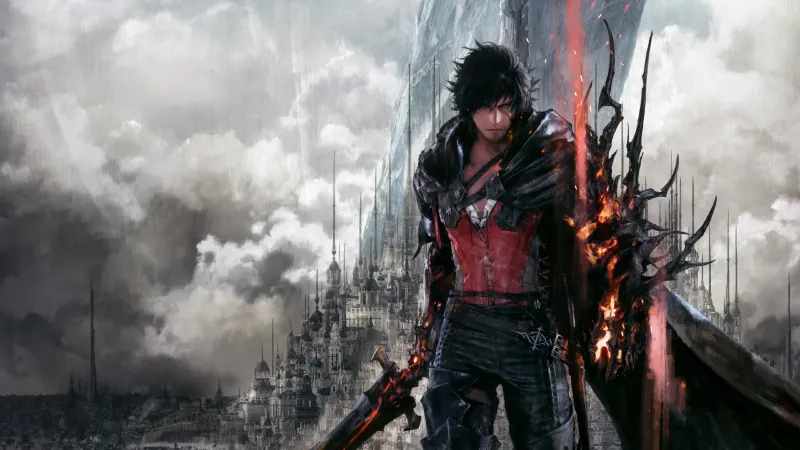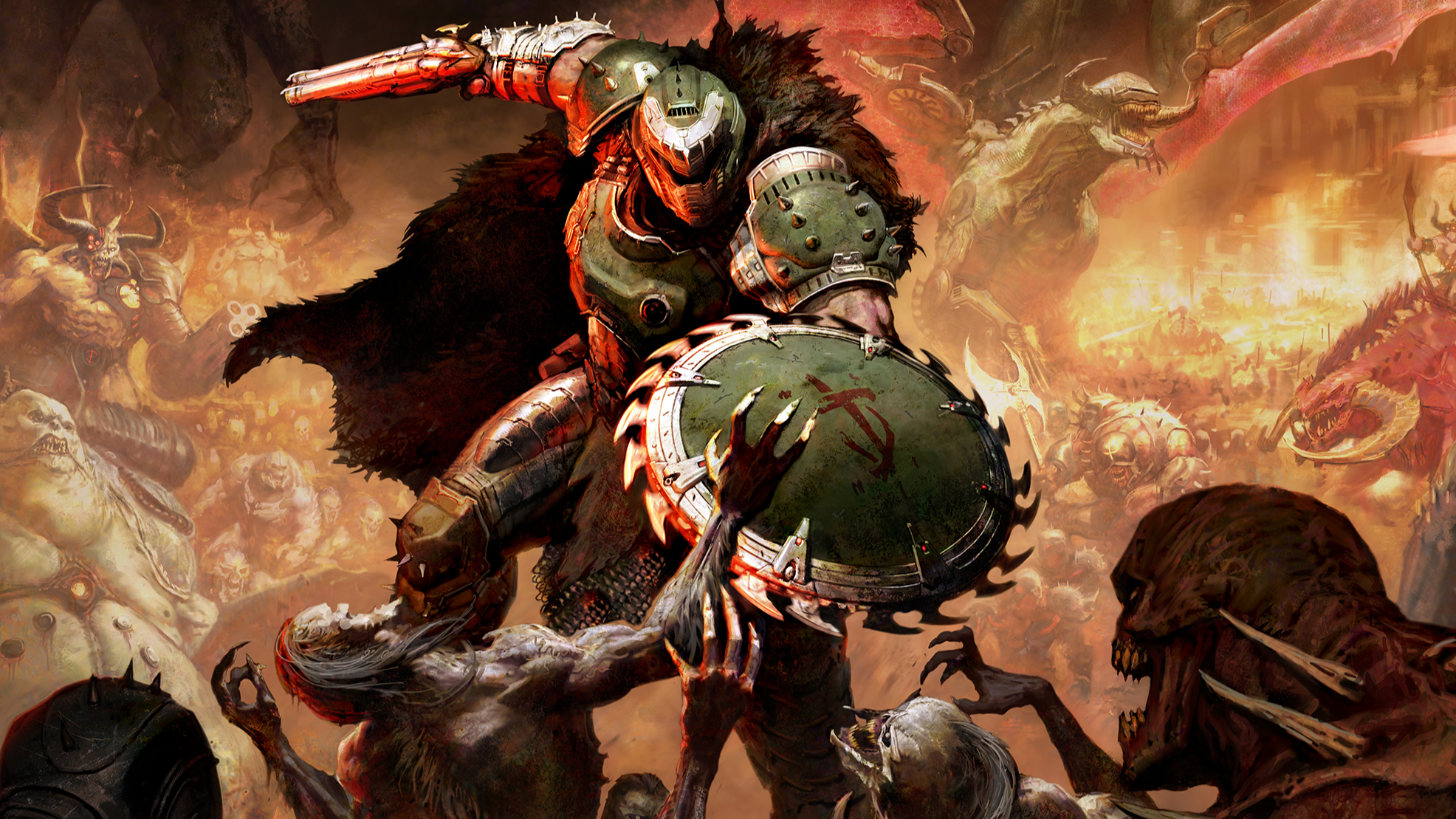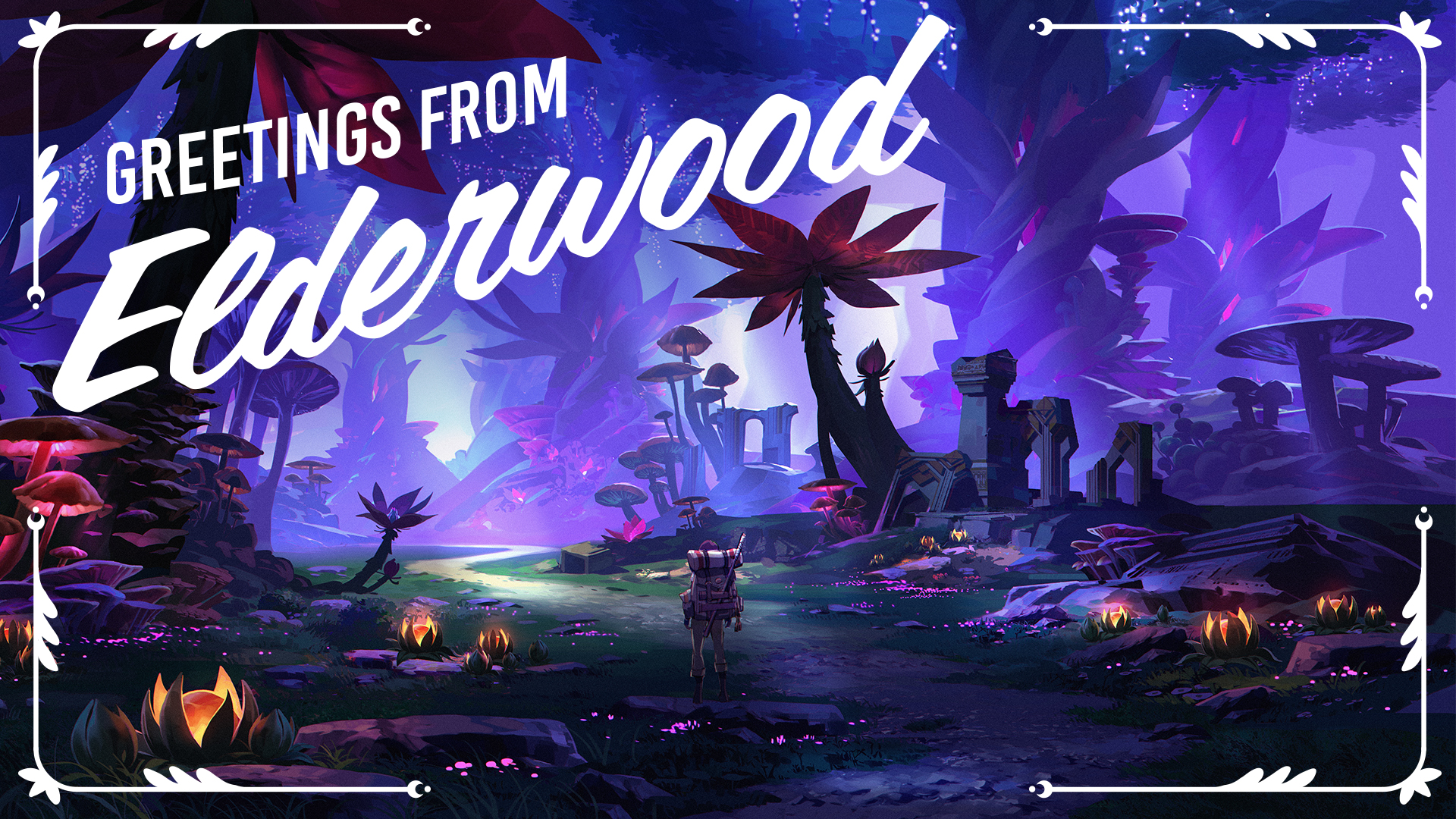
Platform: PlayStation 5 Publisher: Square Enix Developer: Square Enix Release: June 22, 2023 Since the reveal of Final Fantasy XVI in 2020, my questions about the title have continued to grow. Mind you, my questions are firmly planted in the fascination of everything surrounding this game, like how Final Fantasy XIV studio Creative Business Unit III is developing the title with Naoki Yoshida in the producer role or how former Devil May Cry 5 and Marvel vs. Capcom 2 combat designer Ryota Suzuki is the game’s lead combat director. Will FFXVI feature the storytelling prowess of FFXIV? Will its combat go full stylish action? What does it mean that this upcoming sequel is the first Mature-rated game in the series (quick answer: hearing Final Fantasy characters say f**k)? These are just a few questions I had going into a recent hands-on preview for FFXVI. While many still linger, I’m now ready to let myself be fully excited for the game’s June 22 release. Yoshida assured us the game will not get delayed, but this is the same company that spent a lot of money on a three-hour Final Fantasy XV stage show to announce that game’s release date… only for it to get delayed. The game’s trailers have done a lot to sell me on the world, but with this being the most action-heavy Final Fantasy yet, going hands-on was something I’d been hoping to do for a while. After nearly two hours of controlling protagonist Clive and the Ifrit Eikon, I’m stoked by how well Suzuki’s Devil May Cry-isms work in Final Fantasy. FINAL FANTASY XVI © 2023 SQUARE ENIX CO., LTD. All Rights Reserved Clive’s younger brother, Joshua, is a Dominant, a unique being that can transform into an Eikon, the game’s term for summon monsters. This is a handy power for Rosaria, the kingdom where the two reside, and these Eikons help keep the lands of Valisthea, made up of five nations with their own Dominants, in check. Without spoiling much, this relationship is seemingly at the heart of the game and soon after its start, Clive embarks on a journey of revenge. Yoshida says we’ll bear witness to Clive’s teen years, his 20s, and even his 30s. I like the idea of sticking with this main protagonist for so much of his life, especially because Yoshida says Clive is who we’ll primarily control throughout the game. Party members do join Clive from time to time, he says, but they’re always controlled by A.I. Most of my playthrough saw me running Clive and Cidolfus Telamon, a dominant able to become the Ramuh Eikon, through a castle dungeon taking place about five hours into the game. Immediately, FFXVI’s combat is faster than anything else in the series. It’s combo-driven, reliant on a mix of Clive’s sword attacks, Eikonic abilities, and standard magic. And after some time familiarizing myself with the combat, I was able to pull off some impressive combos. I’d start slashing with my sword, then press Circle to use my Phoenix Eikon’s fiery dash-teleport ability to close the distance between myself and the next enemy. As I finish that enemy, I tap R2 to switch from my Phoenix ability wheel to my Titan Eikon wheel because its Circle ability allows me to draw upon a large rock shield to block incoming attacks. With each of these weapon wheels, Clive has special abilities he can use on a timer. The Phoenix has large AOE fire attacks at this point in the game, with one lifting enemies into the air, while the Titan uses a large rock hammer to deal extreme damage. The Titan’s abilities are especially fun to use because you can release the button during a specific window (indicated with a circle on screen) for extra damage. In between all of this, I’m dodging unblockable attacks and parrying others. During a final boss fight, I was slamming buttons frenetically, seeing just how reactive the combat is, and to my surprise, it kept up quite well. Devil May Cry fans will feel right at home in FFXVI. But fret not if action games aren’t your thing; special ring accessories let you customize the difficulty on the fly. There’s no easy, medium, or hard mode – just story-focused and action-focused. Regardless, you can equip these rings to amplify or lessen the challenge. I had access to a ring that temporarily slowed time before attacks, allowing me to easily press R1 to dodge. Another ring automatically selected the attacks Torpal (your dog companion that, yes, you can pet) performed. Others let me auto-dodge most attacks or used potions automatically when health was low. There’s even one that turns the game’s heavy action into a one-button show that performs combos for you. I like how I could curate combat without changing the entire experience on a system-wide level. I was also able to fight the Garuda Eikon as Clive, and while it was flashy and cinematic, it was less exciting. The battle played out in a tight arena, and I was button-mashing until prompts appeared to further the fight. It was ultimately boring compared to the rest of the combat in the game. The Eikon vs. Eikon battle – my Ifrit vs. Garuda – was much more thrilling. Controlling like a Kaiju fight, the two massive summons were slow but hit hard. Watching the scenery around me crumble, ignite with fire, and grow more and more destroyed was a nice touch. I only had access to a few attacks as Ifrit, and Yoshida says the fight reflects Clive’s inexperience tapping into the Eikon’s power. Cidolfus even had to use Ramuh to draw Clive back out of his fiery rage after the fight against Garuda, drawing attention to how much damage Clive had caused in the area. What’s especially interesting is Yoshida says this particular Eikon vs. Eikon battle is like no other, as each of these special cinematic fights is unique. Whereas this one felt like a Kaiju fight – Yoshida says Evangelion, Godzilla, and Ultra Man inspire it – a battle with Phoenix will be more like a 3D shooter, while another with the Titan Eikon will be more about high-speed action. Yoshida even joked about how absurd it is to make such unique battles and associated combat systems only for them to be used once in the game. But I look forward to seeing how far these battles stretch across genres in a single Final Fantasy game. It’s different for the series, and something I think will, to some degree, become one of the defining facets of it across this decades-long series. I could wax on about what I enjoyed in FFXVI. The taste of the score I heard was unsurprisingly fantastic, considering it’s coming from FFXIV composer Masayoshi Soken. The voice acting is also great, although overly medieval British, and the characters and their convictions seem enticing. I was least impressed visually, but what I played through was dark and mostly took place in a nondescript castle; I hope the final game impresses me more because graphics and how Square Enix leverages hardware technology are a big part of the series’ draw. But still, if what I played is any indication, FFXVI is looking to shake up this long-running series in many exciting ways, and while I’d like to play more to see just how successful these unique moving parts work in tandem with each other, the game’s first impression is a strong one. Editor's Note about this preview build: This was a special version made for media to experience, and contents may differ from the final version. Purchase
Platform:
PlayStation 5
Publisher:
Square Enix
Developer:
Square Enix
Release:
June 22, 2023
Since the reveal of Final Fantasy XVI in 2020, my questions about the title have continued to grow. Mind you, my questions are firmly planted in the fascination of everything surrounding this game, like how Final Fantasy XIV studio Creative Business Unit III is developing the title with Naoki Yoshida in the producer role or how former Devil May Cry 5 and Marvel vs. Capcom 2 combat designer Ryota Suzuki is the game’s lead combat director. Will FFXVI feature the storytelling prowess of FFXIV? Will its combat go full stylish action? What does it mean that this upcoming sequel is the first Mature-rated game in the series (quick answer: hearing Final Fantasy characters say f**k)?
These are just a few questions I had going into a recent hands-on preview for FFXVI. While many still linger, I’m now ready to let myself be fully excited for the game’s June 22 release. Yoshida assured us the game will not get delayed, but this is the same company that spent a lot of money on a three-hour Final Fantasy XV stage show to announce that game’s release date… only for it to get delayed. The game’s trailers have done a lot to sell me on the world, but with this being the most action-heavy Final Fantasy yet, going hands-on was something I’d been hoping to do for a while. After nearly two hours of controlling protagonist Clive and the Ifrit Eikon, I’m stoked by how well Suzuki’s Devil May Cry-isms work in Final Fantasy.
FINAL FANTASY XVI © 2023 SQUARE ENIX CO., LTD. All Rights Reserved
Clive’s younger brother, Joshua, is a Dominant, a unique being that can transform into an Eikon, the game’s term for summon monsters. This is a handy power for Rosaria, the kingdom where the two reside, and these Eikons help keep the lands of Valisthea, made up of five nations with their own Dominants, in check. Without spoiling much, this relationship is seemingly at the heart of the game and soon after its start, Clive embarks on a journey of revenge.
Yoshida says we’ll bear witness to Clive’s teen years, his 20s, and even his 30s. I like the idea of sticking with this main protagonist for so much of his life, especially because Yoshida says Clive is who we’ll primarily control throughout the game. Party members do join Clive from time to time, he says, but they’re always controlled by A.I. Most of my playthrough saw me running Clive and Cidolfus Telamon, a dominant able to become the Ramuh Eikon, through a castle dungeon taking place about five hours into the game.
Immediately, FFXVI’s combat is faster than anything else in the series. It’s combo-driven, reliant on a mix of Clive’s sword attacks, Eikonic abilities, and standard magic. And after some time familiarizing myself with the combat, I was able to pull off some impressive combos. I’d start slashing with my sword, then press Circle to use my Phoenix Eikon’s fiery dash-teleport ability to close the distance between myself and the next enemy. As I finish that enemy, I tap R2 to switch from my Phoenix ability wheel to my Titan Eikon wheel because its Circle ability allows me to draw upon a large rock shield to block incoming attacks.
With each of these weapon wheels, Clive has special abilities he can use on a timer. The Phoenix has large AOE fire attacks at this point in the game, with one lifting enemies into the air, while the Titan uses a large rock hammer to deal extreme damage. The Titan’s abilities are especially fun to use because you can release the button during a specific window (indicated with a circle on screen) for extra damage. In between all of this, I’m dodging unblockable attacks and parrying others. During a final boss fight, I was slamming buttons frenetically, seeing just how reactive the combat is, and to my surprise, it kept up quite well. Devil May Cry fans will feel right at home in FFXVI.
But fret not if action games aren’t your thing; special ring accessories let you customize the difficulty on the fly. There’s no easy, medium, or hard mode – just story-focused and action-focused. Regardless, you can equip these rings to amplify or lessen the challenge. I had access to a ring that temporarily slowed time before attacks, allowing me to easily press R1 to dodge. Another ring automatically selected the attacks Torpal (your dog companion that, yes, you can pet) performed. Others let me auto-dodge most attacks or used potions automatically when health was low. There’s even one that turns the game’s heavy action into a one-button show that performs combos for you. I like how I could curate combat without changing the entire experience on a system-wide level.
I was also able to fight the Garuda Eikon as Clive, and while it was flashy and cinematic, it was less exciting. The battle played out in a tight arena, and I was button-mashing until prompts appeared to further the fight. It was ultimately boring compared to the rest of the combat in the game.
The Eikon vs. Eikon battle – my Ifrit vs. Garuda – was much more thrilling. Controlling like a Kaiju fight, the two massive summons were slow but hit hard. Watching the scenery around me crumble, ignite with fire, and grow more and more destroyed was a nice touch. I only had access to a few attacks as Ifrit, and Yoshida says the fight reflects Clive’s inexperience tapping into the Eikon’s power. Cidolfus even had to use Ramuh to draw Clive back out of his fiery rage after the fight against Garuda, drawing attention to how much damage Clive had caused in the area.
What’s especially interesting is Yoshida says this particular Eikon vs. Eikon battle is like no other, as each of these special cinematic fights is unique. Whereas this one felt like a Kaiju fight – Yoshida says Evangelion, Godzilla, and Ultra Man inspire it – a battle with Phoenix will be more like a 3D shooter, while another with the Titan Eikon will be more about high-speed action. Yoshida even joked about how absurd it is to make such unique battles and associated combat systems only for them to be used once in the game. But I look forward to seeing how far these battles stretch across genres in a single Final Fantasy game. It’s different for the series, and something I think will, to some degree, become one of the defining facets of it across this decades-long series.
I could wax on about what I enjoyed in FFXVI. The taste of the score I heard was unsurprisingly fantastic, considering it’s coming from FFXIV composer Masayoshi Soken. The voice acting is also great, although overly medieval British, and the characters and their convictions seem enticing. I was least impressed visually, but what I played through was dark and mostly took place in a nondescript castle; I hope the final game impresses me more because graphics and how Square Enix leverages hardware technology are a big part of the series’ draw. But still, if what I played is any indication, FFXVI is looking to shake up this long-running series in many exciting ways, and while I’d like to play more to see just how successful these unique moving parts work in tandem with each other, the game’s first impression is a strong one.
Editor’s Note about this preview build: This was a special version made for media to experience, and contents may differ from the final version.






